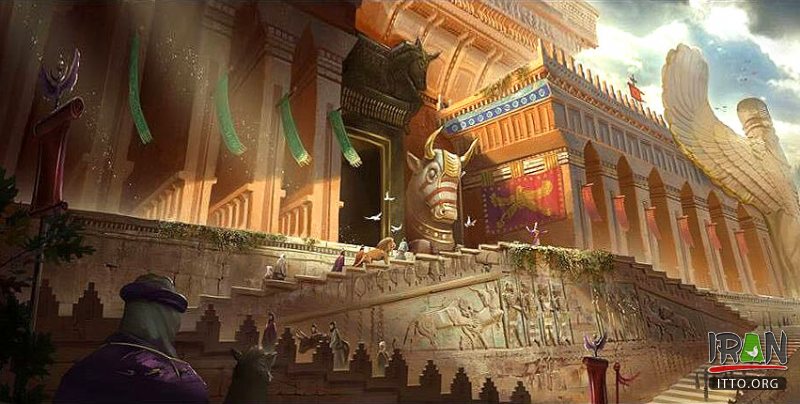Ancient IRAN (AKA Persia), historic region of southwestern Asia that is only roughly coterminous with modern Iran. The term Persia was used for centuries, chiefly in the West, to designate those regions where Persian language and culture predominated, but it more correctly refers to a region of southern IRAN formerly known as Persis, alternatively as Parseh or Pars, modern Fars. Parsa was the name of an Indo-European nomadic people who migrated into the region about 1000 BC. The first mention of Parsa occurs in the annals of Shalmanesar II, an Assyrian king, in 844 BC.
During the rule of the Persian Achaemenian dynasty (559–330 BC), the ancient Greeks first encountered the inhabitants of Persis on the Iranian plateau, when the Achaemenids (natives of Persis) were expanding their political sphere. The Achaemenids were the dominant dynasty during Greek history until the time of Alexander the Great, and the use of the name Persia was gradually extended by the Greeks and other peoples to apply to the whole Iranian plateau. This tendency was reinforced with the rise of the Sasanian dynasty, also native to Persis, whose culture dominated the Iranian plateau until the 7th century AD.
The people of this area have traditionally referred to the region as Iran (Land of the Aryans) and in 1935 the government of Iran requested that the name IRAN be used in lieu of Persia. The two terms, however, are often used interchangeably when referring to periods preceding the 20th century. The early history of Iran may be divided into three phases:
1- the prehistoric period, beginning with the earliest evidence of humans on the Iranian plateau (c. 100,000 BC) and ending roughly at the start of the 1st millennium BC
2- the protohistoric period, covering approximately the first half of the 1st millennium BC
3- the period of the Achaemenian dynasty (6th to 4th century BC), when IRAN entered the full light of written history. The civilization of Elam (Or Ilam), centred off the plateau in lowland Khuzestan, is an exception for written history began there as early as it did in neighbouring Mesopotamia (c. 3000 BC).
The sources for the prehistoric period are entirely archaeological. Early excavation in Iran was limited to a few sites. In the 1930s archaeological exploration increased, but work was abruptly halted by the outbreak of World War II. After the war ended, interest in Iranian archaeology revived quickly, and, from 1950 until archaeological study was dramatically curtailed after 1979, numerous excavations revolutionized the study of prehistoric Iran.
For the protohistoric period the historian is still forced to rely primarily on archaeological evidence, but much information comes from written sources as well. None of these sources however is both local and contemporary in relation to the events described. Some sources are contemporary but belong to neighbouring civilizations that were only tangentially involved in events in the Iranian plateau for example, the Assyrian and Babylonian cuneiform records from lowland Mesopotamia. Some are local but not contemporary, such as the traditional Iranian legends and tales that supposedly speak of events in the early 1st millennium BC. And some are neither contemporary nor local but are nevertheless valuable in reconstructing events in the protohistoric period (e.g. Greek historian Herodotus).
For the study of the centuries of the Achaemenian dynasty, there is sufficient documentary material so that this period is the earliest for which archaeology is not the primary source of data. Contributing to the understanding of the period are, among other sources, economic texts from Mesopotamia, Elam (Ilam), and IRAN; historical inscriptions such as that of Darius I (the Great) at Behistun (modern Bisotun) contemporary and later classical authorsand later Iranian legends and literature.


